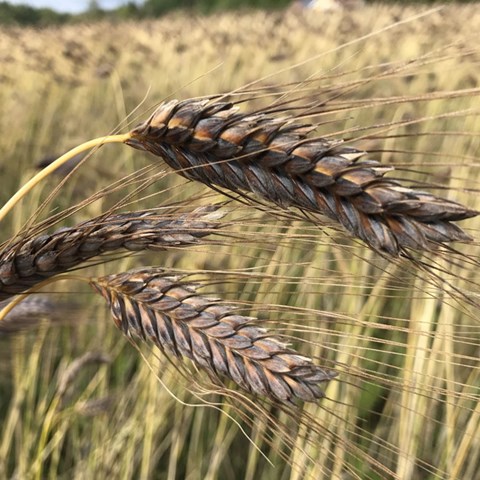Facts:
Link to the article in Agronomy for Sustainable Development:
Risks and opportunities of increasing yields in organic farming. A review

Increased yields in organic production can lead to lower environmental impact per produced unit and may be a good way to meet the growing demand for organic products. However, there are risks with increased yields and conflicts of interest that need to be managed. Increased weed control, for example, can reduce biodiversity and increased yields in organic livestock can worsen animal health problems. A new review article examines these risks and opportunities with different strategies for increasing the yields in organic production.
The article is written by former and present employees at EPOK. It covers a wide range of sustainability aspects:
• biodiversity
• greenhouse gas emissions, nutritional losses
• soil fertility
• animal health and animal welfare
• food nutritional aspects and human health
• profitability for the farmer
The studied measures to increase crop yields include increased nitrogen supply and intensified control of weed, diseases and pests. For livestock farming, consequences of breeding for higher yields and a greater proportion of concentrates to ruminants have been investigated. In addition, the effects of reduced losses in both plant and animal production are discussed.
Strategies aimed at increasing resource efficiency can both increase yields and reduce environmental impact per product unit. Effective nitrogen utilization has great potential to both increase yield and reduce eutrophication through reduced nitrogen leaching and reduce climate impact through reduced gas emissions from the soil. However, increased nitrogen supply can imply risks. Nitrogen supply close to optimal levels increases the risk of nitrogen being lost to air and water, a risk that is increased when using certain types of organic fertilizers and green manure.
Increased yields in organic crop production also mean an increased amount of crop residues and thus increased carbon sequestration in the soil – positive for both soil fertility and climate. More effective weed control increases the yield, but can affect biodiversity in fields negatively – a decrease in flowering herbs may adversely affect pollinators and birds. Habitat manipulation in the surrounding landscape to create environments for a variety of organisms can be a strategy to counteract these adverse effects on biodiversity and it can also promote biological control of pests. More research in this area is needed.
The consequences for human health of the different strategies to increase yields are assessed to be small.
Regarding farmers' profitability, the consequences depend for example on what investments are required. An important aspect is a continued consumers’ trust in the production – if yields are increased in ways that make organic production more similar to conventional production, consumers’ willingness to pay can be affected.
With regard to animal husbandry, it is noted that since the same breeds are usually used in organic as in conventional production, the yield within organic production is already good and organic production also shares many animal health challenges with the conventional production. A continued focus on large yields in animal husbandry is likely to exacerbate animal health problems. Therefore, it may be discussed whether further yield increases in organic livestock should really be a goal, or whether focus should be on improving animal health and animal welfare with sustained or even reduced yield levels. The authors also point to another path that organic farming could take, namely to offer a radically different system using breeds adapted to organic production, for example, more robust pig and broiler breeds that are capable to stay outdoors on large areas. The yield would be lower in such systems, which needs to be balanced with a reduction in the consumption of animal products, something that also is important for achieving climate goals.
In summary, the article states that there are both risks and opportunities in increasing yields in organic production. The final outcome is largely dependent on the management and how potential conflicts of interest are handled. For example, if increased weed control is compensated by measures in the field borders to increase flowering herbs, the impact on biodiversity doesn’t have to be negative. However, there are no requirements for such measures within the current organic regulations, which implies that it may be necessary to introduce such and similar requirements in order for organic production to deliver environmental benefits. Other new regulations that may also be needed are requirements for catch crops, optimal nitrogen management and good crop rotations, as well as landscape elements that can capture nitrogen to reduce leaching risks when nitrogen levels increase.
Link to the article in Agronomy for Sustainable Development:
Risks and opportunities of increasing yields in organic farming. A review
E-mail: epok@slu.se